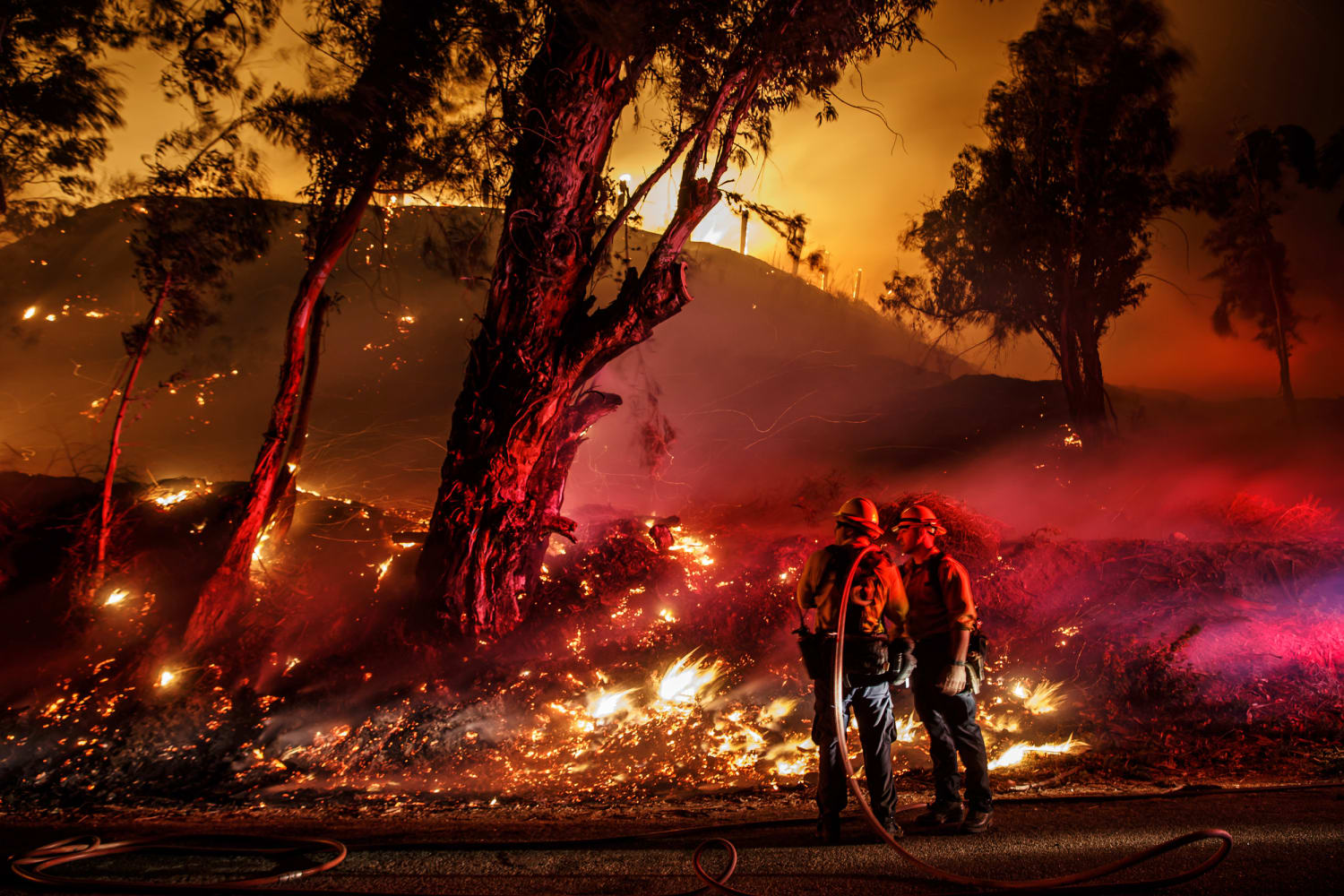Food & Climate
As the deadly Los Angeles wildfires that began last week continue to threaten communities in and around the city, the agricultural sector, known for its diverse crops, faces unprecedented challenges. From avocado groves to vineyards and lemons, the fire’s path threatens to disrupt local food production and livelihoods.
The Palisades Fire in Los Angeles spans 22,660 acres, with only 11% containment, threatening Brentwood and western San Fernando Valley, according to a report seen by “Food & Climate” platform.
Farmers across Southern California are facing the possibility of devastating damage to their crops due to Los Angeles wildfires.
Julia Zorthian and her family have lived and worked at Zorthian Ranch in Altadena, California, since her grandfather purchased the property in the 1940s.
The land has hosted summer camps, taught people how to milk goats and grew citrus and nut trees. But after the Eaton Fire devastated their community, 39 of the farm’s 40 acres have been destroyed — leaving the family without a livelihood or a place to call home.
“It’s so much crazier than anyone could have ever imagined the fire could be,” Zorthian told ABC News. “The places we thought would be safe spaces to keep things that probably wouldn’t get damaged ended up incinerating.”
Alba Velasquez, the executive director of the Los Angeles Food Policy Council, said that farmers face two hurdles, namely economic and air quality challenges.
Currently, Velsquez said there are about 24 farms that are affected by the Eaton Fire, with numbers increasing every day. Velasquez said that could include issues with air quality, flames, smoke or just economic impacts.
“We will rebuild, but it will never be what it was,” Zorthian said. “That was about 80 years of work and artistry.”
Peter Ansel, director of policy advocacy at the California Farmers Bureau, said that the smoke poses a particular threat, including “to people, animals on ranches or on the end-products themselves.” In 2020, smoke from nearby wildfires ruined crops at vineyards in Wine Country.
Los Angeles wildfires make hurdles to sell crops
Other farmers who are not facing the smoke or flames of Los Angeles wildfires, are still struggling to sell their goods, since many farmers markets in Los Angeles County are shut down or receiving a limited number of visitors.
Craig Underwood, owner of Underwood Family Farms in Moorpark, California, said dangerous conditions prevented the crew from attending the Brentwood market and poor air quality resulted in few visitors at the Pasadena market — drastically diminishing their sales.
“There will be long-term economic impacts,” he said. “We count on those farmers markets for selling a lot of those produce.”

The damaging winds from the past week have led to several power outages on Underwood’s farm and has increased the risk of scarring their lemons. Until the gusts diminish, the farm will be closed.
“Right now, the lemon market is not that strong, so to have our quality degraded really hurts,” Underwood said. “Fruits and vegetables sell by appearance as much as anything else.”
While large fires haven’t broken out farther south in San Diego County, abnormally strong winds are still wreaking havoc on farms.
Andy Lyall, a fourth-generation citrus and avocado grower in Pauma Valley, California, north of San Diego, is part of a tight-knit, family business that goes back to 1933, said, he is accustomed to strong gusts, but the violent Santa Ana winds fanning the recent California wildfires were completely unexpected.
“We’ve gotten through a lot of winds, but this one just hammered us,” Lyall said.
Andy Lyall, a farmer who lost 50% of his avocado crop from the fire’s damaging winds, said: “these disastrous winds, which swirled through avocado trees, destroyed about 50% of the crops”.
Avocados are the fourth-largest crop in the area, according to the San Diego County Farm Bureau. But Lyall said the destruction from these winds will ultimately change those numbers.
“This really will hurt the supply of avocados,” Lyall said. “It’s a significant crop that we grow in our county and this is definitely going to impact the supply of safe, locally produced produce that will be in the stores this upcoming spring and summer.”
Noninsured Disaster Assistance Program
The California Department of Food and Agriculture recommends farmers who have experienced crop loss to look into their Noninsured Disaster Assistance Program, which” pays covered producers of covered noninsurable crops when low yields, loss of inventory, or prevent.
Farmonaut, a group which targets goal to find real-life solutions to the problems farmers deal with, assessed Los Angeles wildfires Impact on agriculture.
It said that avocado orchards lost 3,500 acres, $ 15 million potential economic loss, and 24-36 months of recovery time estimate.
And vineyards fields lost 2,800 acres, $20 million potential economic loss, and 36-48 months of recovery time estimate.
Vegetable Farms orchards lost 1,200 acres, $5 million potential economic loss, and 6-12 months of recovery time estimate.

Citrus Groves lost 2,000 acres, $10 million potential economic loss, and 18-24 months of recovery time estimate.
Livestock Pastures lost 5,000 acres, $8 million potential economic loss, and 12-18 months of recovery time estimate.

